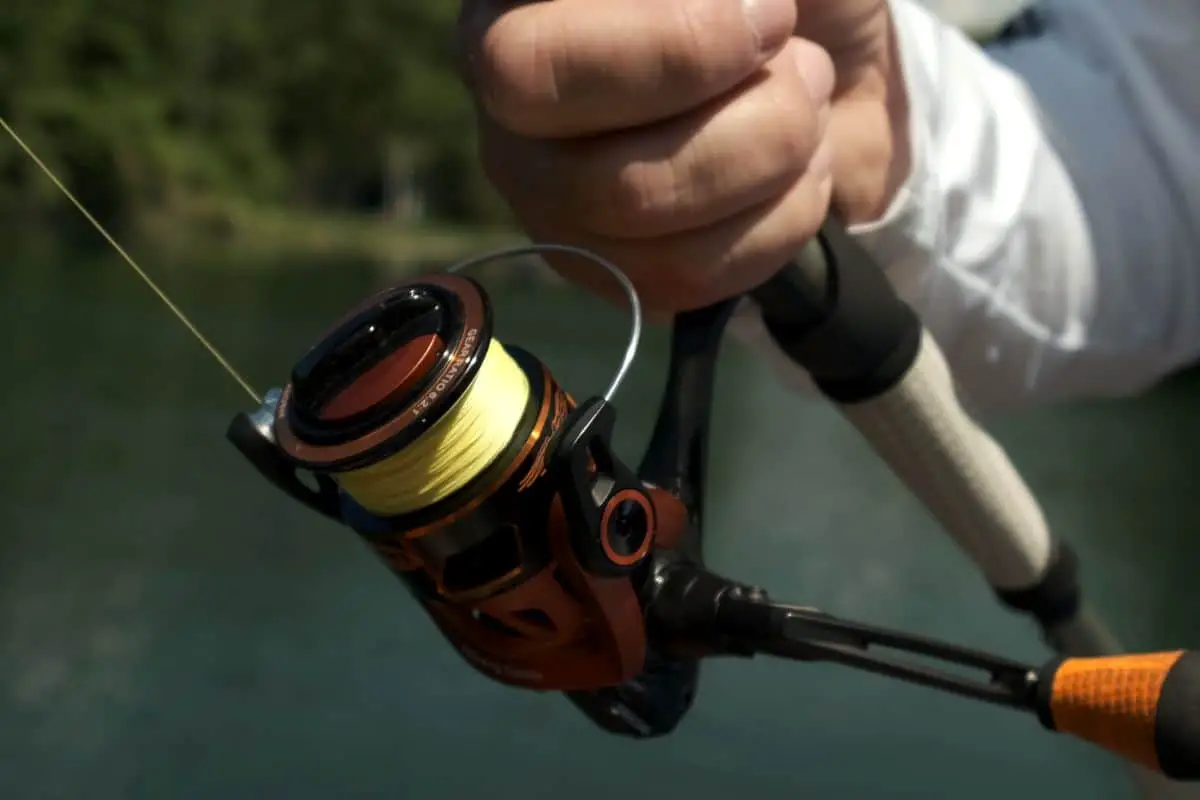Spinning reels are perfect for a wide range of applications. Line choice on our spinning reels is important when bass fishing. Anglers have several options to choose from: monofilament, fluorocarbon, braid, and braided line with a leader.
For most finesse fishing applications, a braided line with a fluorocarbon leader is by far the best choice.
We will break down the characteristics of each line type and the applications and presentations where each line is best.
Characteristics of Each Line Type
The below table will break down the pros and cons of each type of fishing line.
| Line Type | Pros | Cons |
| Monofilament | Inexpensive, Easy to handle | Lots of stretch |
| Fluorocarbon | Low-visibility, Abrasion Resistant | Expensive, Wrong knot will snap easily |
| Braid | Very sensitive, Lasts a long time, No-stretch | Expensive, Very Visible |
One of the major factors that anglers take into consideration is cost. While monofilament line is by far the cheapest, anglers also need to take into consideration how often the line needs to be changed.
For example, a quality braided line will cost more, but it is common to get two fishing seasons out of it. After a few short weeks both monofilament and fluorocarbon will start to demonstrate awful line twist making it almost pointless to use.
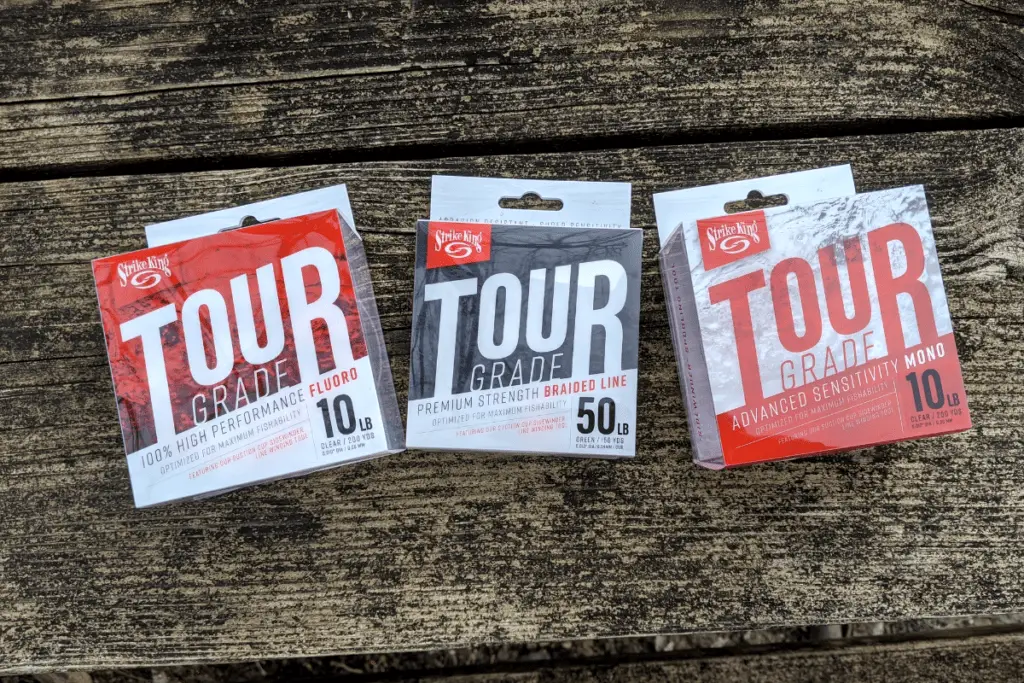
The rigidity of fluorocarbon also makes the “shelf life” on the spool shorter than many anglers realize. It is common for fluoro to break off on the cast. What actually happens is the line becomes stiff while being tight on the spool of the reel. This leads to weak spots and breakage can and will occur.
Using a leader with a braid mainline will not only save anglers time because they will respool less often, it will also save a considerable amount of money over the course of a couple of seasons.

The Benefits of Braided Line for Spinning Reels (With a Leader)
Eliminates Line Twist
One of the major drawbacks of using spinning gear is the tendency for the line to twist.
These curls in the line not only can cause huge amounts of angler frustration when it blows off the spool, but it can also cause wind knots when casting and reduces casting distance by a considerable amount.
Both fluorocarbon and monofilament lines will start to show signs of line twist shortly after spooling.
While twist is still possible with a braided line, it is much less likely to happen, especially when spooled on correctly.
Increased Casting Distance with Braided Line
The elimination of line twist is one factor that contributes to the extreme casting distance anglers can achieve when using a braided line on a spinning reel.
The smooth surface of braid and its limpness also allows the line to fly off the spool and through the guides with ease.
Even when casting extreme finesse lures, like a Ned Rig, anglers can achieve impressive distance.
This is important when fishing finesse lures. If the conditions are such that anglers need to utilize finesse presentations, there needs to be distance between the angler and the fish. The end result is many more bites and braided line helps anglers achieve this distance.
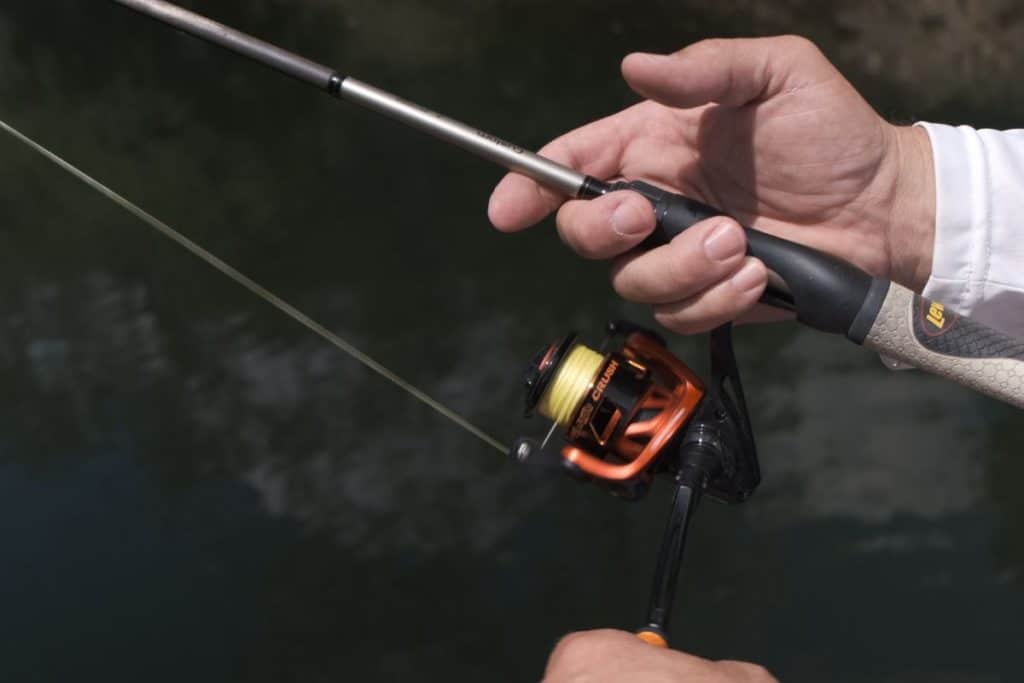
Braided Line is Extremely Sensitive
This may be the best characteristic of braided line. It has the best sensitivity out of any fishing line type.
This allows anglers to decipher bottom composition with ease. When a bass angler can tell the difference between sand, muck, gravel, and silt, they will find and catch many more fish. This sensitivity lets him or her determine where the bass are sitting and what type of cover or structure the fish are relating to.
The sensitivity also telegraphs a bite to the angler by far better than mono and fluoro. Once again, when using finesse presentations, bites can be subtle. The added sensitivity means more bites will be felt and many more bass caught.
Using a hi-vis braid with a leader will also allow the angler to see the line much better. This means the smallest twitch or movement in the line will be seen and the angler can set the hook, even if they did not “feel” a bite.
Leader Type to Use With Braid
Most anglers will use a leader made of fluorocarbon, although a monofilament leader can be used as well.
Fluorocarbon is more sensitive than mono and pairs well with the ultra-sensitivity of braided lines.
Leader length varies, but using one with a length of at least three feet is preferred with leaders up to six feet not uncommon. This length of leader gives you enough room to retie lures a few times before a new piece of leader will be needed.
Connecting Knots to Use
There are many types of connecting knots that can be used to tie a length of leader to your braided main line.
My personal favorite is the Red Phillips knot, but other very popular knots include the Crazy Alberto knot, the FG knot, and the Double-Uni knot.
A quick search on YouTube will bring up plenty of great videos on each of these connecting knots.
Here is my video on tying the Red Phillips knot.
Bass Fishing Presentations and Line Type Best Suited for Each
As mentioned earlier, I would go through each of the major bass fishing presentations and list the line type that is best suited for that style of fishing.
Finesse Presentations That Have Bottom Contact
This includes such bass fishing staples as the Shaky Head, Ned Rig, Drop Shot, and the Neko Rig. I would also throw the Wacky Rig in here as well even though that is considered more of a drop bait.
My preferred setup for all of these is a braided main line with a fluorocarbon leader.
When bottom contact is in play, the sensitivity of this line setup is tough to beat.
It also allows for those extra long casts we talked about before. When finesse presentations are needed, the distance both vertically and horizontally from the fish is important for angler success.
Braid makes these long casts attainable with line that comes off the spool naturally and without line twist.
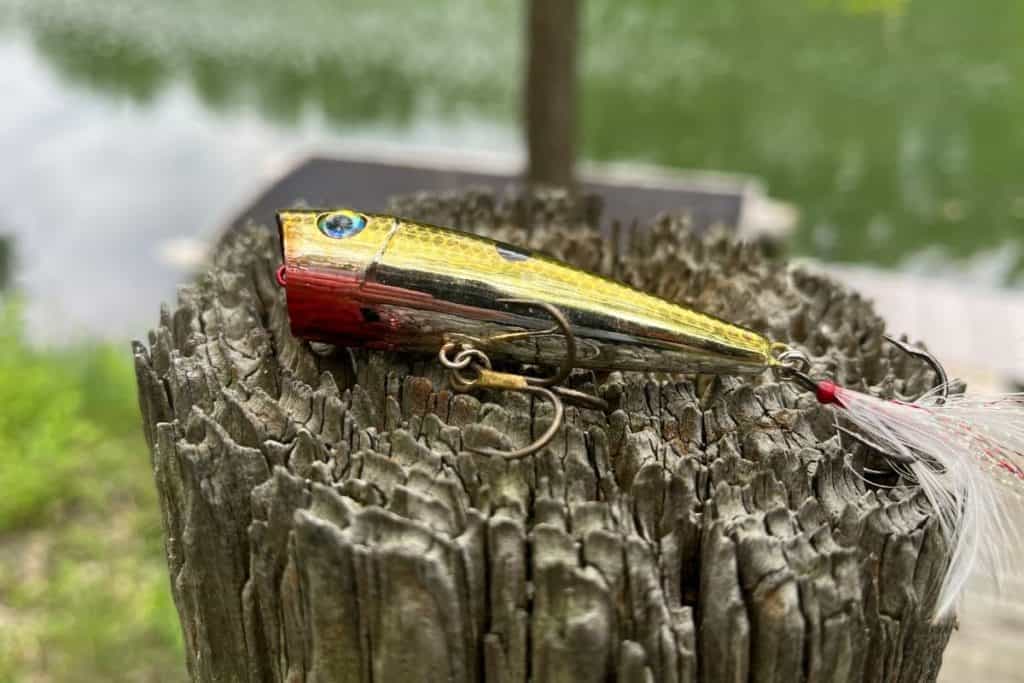
Line Choice for Spinning Reels When Fishing Topwaters
Both monofilament and braid can be used with topwaters and the choice really comes down to the type of cover being fished. Both lines float, whereas fluorocarbon sinks.
When fishing topwater lures over and in heavy cover, braid will give the angler the strength needed to wrestle fish out of the thick stuff. Most bass anglers will be using a casting rod with a baitcast reel when fishing heavy cover, but a good Medium Heavy spinning rod will work well in most situations.
Topwater lures that are used in more open water situations and do not have the chance of getting buried in thick vegetation are well-matched with monofilament line.
Besides the line floating, it also has the most stretch out of the three line choices. This can come in helpful when an angler is too quick with their hooksets. Topwater fishing is very visible and it is easy to pull that lure away from or out of the fish’s mouth.
The extra stretch in mono helps to alleviate that problem. If the fish has a hold of it, there is some give. This allows the bass to take it better before the angler’s reflexes yank the lure away from it.
(Here is an article on choosing the right topwater lure for the situation.)
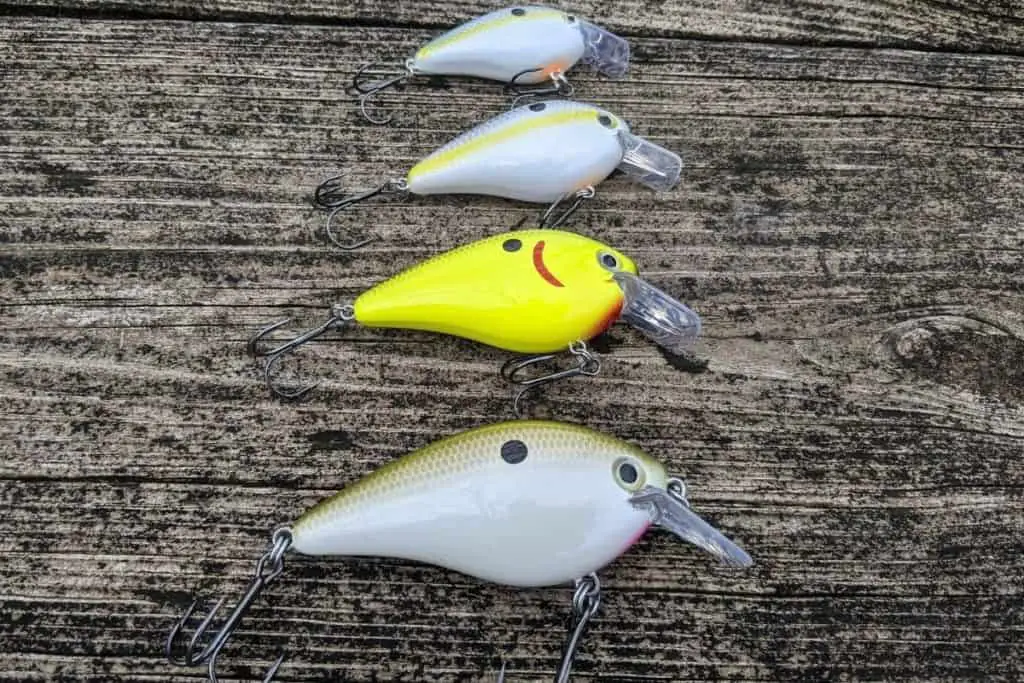
Line Choice for Spinning Reels When Fishing Crankbaits
Out of the three popular line choices, fluorocarbon is the only one that sinks.
This makes a spinning reel filled with straight fluoro a great choice for a crankbait used on a spinning setup.
The weight of fluoro lets an angler get a little more depth with the lure than when using either mono or braid. There are anglers that use braid on their crankbaits, but this is something that I have not done.
Crankbaits are notorious for pulling loose from fish as well. The slight stretch in fluoro will help with this, although using a rod designed for crankbaits will be your best option. The parabolic action has enough give to keep the fish hooked and not pull the treble hooks off as easily.
Line Choice When Fishing in Heavier Cover With Spinning Reels
A straight braided line is a solid choice when fishing around the thickest and heaviest cover.
As I mentioned earlier, I prefer to use a casting rod and baitcast reel in heavy cover, but there are plenty of anglers that still use spinning gear because they feel more comfortable with it.
A Medium Heavy power-rated rod with a fast or extra-fast action will pair well with straight braid.
The angler will have enough power to set the hook and keep the bass from burying up in the cover.
Final Thoughts
In most situations, the braid to leader combination is what I have on my spinning gear because I fish my crankbaits and heavy cover lures with baitcast equipment.
On my spinning reels, I like to use a 20lb performance braid that is matched with a fluorocarbon leader that is anywhere from 6-12lb.
Good luck out there and be sure to encourage someone today. You never know how you may change their life forever.
Isaiah 6:8

